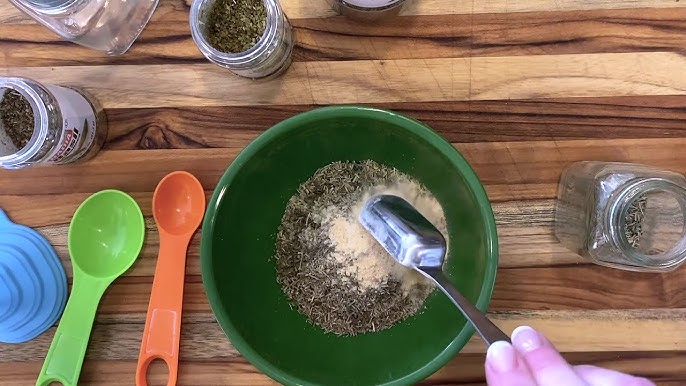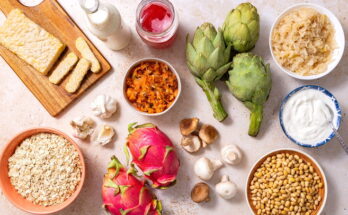Italian Seasoning Recipe: Italian seasoning is a versatile and aromatic blend of herbs that’s a must-have in any kitchen. This flavorful mix is the secret behind the classic taste of many Italian dishes, from marinara sauces to roasted vegetables. While store-bought blends are convenient, homemade Italian seasoning is fresher, customizable, and free from preservatives or artificial additives. With just a few simple steps, you can create your own version that’s tailored to your taste.
Ready to elevate your cooking? Let’s dive into the world of Italian seasoning and learn how to make it from scratch!
What is Italian Seasoning?
A Blend of Classic Herbs
Italian seasoning is a dried herb mix that combines some of the most popular Mediterranean flavors. It typically includes oregano, basil, rosemary, thyme, and marjoram, all of which contribute to its warm, earthy, and slightly sweet profile. While the mix doesn’t originate directly from Italy, it’s inspired by the flavors commonly found in Italian cuisine.
Why It’s a Pantry Staple
Italian seasoning is incredibly versatile. Whether you’re making pizza, pasta sauce, or even grilled chicken, a pinch of this blend can transform your dish. Compared to store-bought options, making your own ensures a fresher and more aromatic blend with no hidden additives.
Benefits of Making Homemade Italian Seasoning
Fresher Ingredients, Better Flavor
The herbs in homemade Italian seasoning retain their full flavor and aroma, unlike pre-packaged mixes that might sit on shelves for months. Using high-quality dried herbs ensures that every sprinkle packs a punch.
Cost-Effective and Customizable
Creating your own Italian seasoning at home is a budget-friendly option. Plus, you can adjust the ratios of herbs or add extras like garlic powder or chili flakes to suit your preferences.
Ingredients for Italian Seasoning
Key Herbs
- Oregano: The backbone of Italian seasoning, with a bold and slightly peppery flavor.
- Basil: Adds a sweet and aromatic touch.
- Rosemary: Known for its piney and woodsy undertones.
- Thyme: Contributes a subtle earthiness.
- Marjoram: A delicate herb that complements oregano.
- Sage: Offers a warm and slightly peppery flavor.
Optional Additions
- Garlic powder: Enhances the savory depth.
- Crushed red pepper flakes: Adds a hint of heat.
- Parsley: Brightens the overall flavor.
Step-by-Step Guide to Making Italian Seasoning
Step 1 – Gathering Your Ingredients
Start by gathering high-quality dried herbs. If possible, choose organic herbs for the best flavor. Check the expiration dates to ensure freshness.
Step 2 – Measuring the Herbs
Use the following ratios as a guide:
- 2 tablespoons oregano
- 2 tablespoons basil
- 1 tablespoon rosemary
- 1 tablespoon thyme
- 1 tablespoon marjoram
- 1 teaspoon sage
Feel free to double or halve the recipe depending on your needs.
Step 3 – Mixing the Ingredients
Combine all the herbs in a small mixing bowl. Stir thoroughly to ensure an even distribution. Crushing the rosemary and thyme slightly with your hands can help release their natural oils, boosting the aroma.
Step 4 – Storing Your Blend
Transfer your Italian seasoning to an airtight container, such as a glass jar with a tight-fitting lid. Label it with the date for reference.
Step 5 – Testing and Adjusting
Try your seasoning in a simple dish like olive oil-dipped bread. Adjust the ratios if needed, adding more of your favorite herbs.
Tips for Using Italian Seasoning
Enhancing Soups and Sauces
A teaspoon of Italian seasoning can elevate tomato soups, marinara sauces, and creamy Alfredo dishes. It’s the key to achieving a restaurant-quality taste at home.
Perfecting Meat, Poultry, and Vegetables
Rub Italian seasoning onto chicken, beef, or pork before cooking. It’s also excellent for roasting vegetables like zucchini, bell peppers, and potatoes.
Infusing Oils and Butters
Mix the blend into olive oil or softened butter to create a flavorful spread or dipping sauce. Perfect for bread, bruschetta, or drizzling over pasta.
Storing and Shelf Life
Ideal Storage Conditions
Store your Italian seasoning in a cool, dry place away from direct sunlight. A spice rack or pantry shelf works well.
How Long Does It Last?
Homemade blends retain their peak flavor for about 6-12 months. If the aroma fades, it’s time to make a fresh batch.
Common Mistakes to Avoid
Overpowering with One Herb
Balance is key. Avoid adding too much of a strong herb like rosemary, which can overwhelm the mix.
Using Stale Ingredients
Old herbs can diminish the flavor of your blend. Always start with the freshest possible ingredients.
FAQs about Italian Seasoning Recipe
What is Italian Seasoning?
Italian seasoning is a versatile blend of dried herbs commonly used in Italian cuisine. It typically includes basil, oregano, rosemary, thyme, and sometimes parsley or garlic powder.
How Can I Make Italian Seasoning at Home?
To make Italian seasoning at home, mix equal parts of dried basil, oregano, rosemary, thyme, and marjoram. Adjust quantities to suit your taste preferences and store in an airtight container.
What Dishes Can I Use Italian Seasoning In?
Italian seasoning is perfect for pasta sauces, pizza, roasted vegetables, marinades, soups, and even salad dressings. Its robust flavors enhance a wide variety of dishes.
How Long Does Homemade Italian Seasoning Last?
When stored in a cool, dry place in an airtight container, homemade Italian seasoning can last up to 6 months while retaining its flavor and aroma.
Is Italian Seasoning Gluten-Free?
Yes, most Italian seasoning blends are naturally gluten-free as they are made solely from dried herbs. Always check packaging or ingredient sources if you have specific dietary concerns.
Can I Customize My Italian Seasoning?
Absolutely! You can add ingredients like red pepper flakes, garlic powder, or onion powder for a unique twist to your seasoning blend.
Conclusion
Making Italian seasoning at home is simple, cost-effective, and guarantees fresh flavors every time. With just a few basic ingredients and steps, you can create a versatile mix that enhances your cooking. So grab those herbs and start blending!



